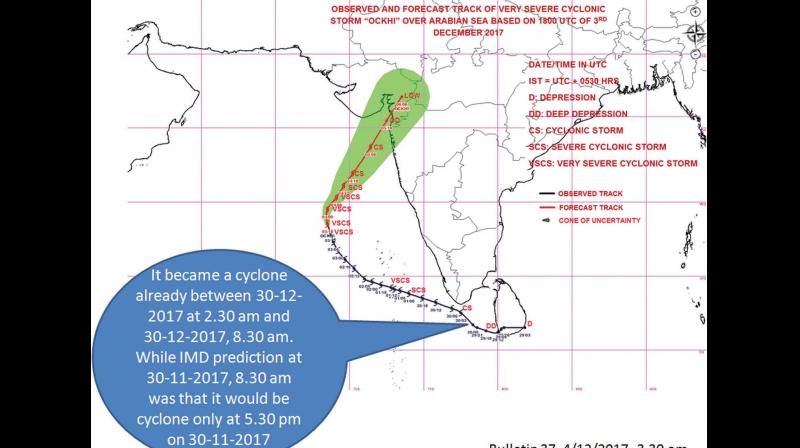Insider View: It's a fatal error of judgment
By downsizing ensembles to 16, the uncertainty band/range in the prediction increases.

The most startling fact is, in the Forecast Demonstration Project (FDP) report issued by IMD on November 29, as late as 5.30 pm, the summary and conclusion regarding the depression over Sri Lanka and adjoining southwest Bay is as follows:
“Global models considered show convergence about intensification by models varies from deep depression to severe cyclonic storm... (but) they (models) are in agreement in predicting the movement of the system and also in predicting the weakening of the system over sea without a landfall”. From the statement, it is evident that even when the models showed intensification, the model forecast judgement, which is a subjective one done by humans, generalised it to be of less importance.
The judgemental error on the part of IMD broke the primary link in the Standard Operating Procedure (SOP) chain of cyclone alerts and warnings. This is precisely the opposite of what Dr Mrutyunjay Mohapatra, director forecasting, IMD, had stated: “Weather forecasting is an initial value problem; that is, if your initial value is correct, your forecast value will be correct”.
There may be reason for this too. It is known from reliable sources that originally, forecast models were being run at Indian Institute of Tropical Meteorology Pune with 46 ensembles. Recently, models were moved to the control of IMD and for some reason the number of ensembles runs was reduced to 16.
The initial value error in most numerical forecast modelling is resolved by numerous preparatory runs called pre-conditioning runs. Further, when numerous models are run in an ensemble mode, a more realistic and statistically certain prediction is arrived at. By downsizing ensembles to 16, the uncertainty band/range in the prediction increases.
There is never a thumb rule for arriving at ‘the best’ number of ensembles, but there can be an optimal. Looking at the successful cyclone track and intensification predictions and alerts of IMD in the Bay of Bengal such as in the case of
HUDHUD, strictly following the 72 hours, 48 hours and 24 hours timeline as laid in the SOP, there cannot be more reasons to believe that this reduction in 46 to 16 ensembles may have caused a drastic quality reduction in uncertainty charts produced by models which may have misled scientists to conclude that “they are in agreement in predicting the movement of the system and also in predicting the weakening of the system over sea without a landfall” and therefore subjectively downscaling the gravity of the cyclone that was in making.

